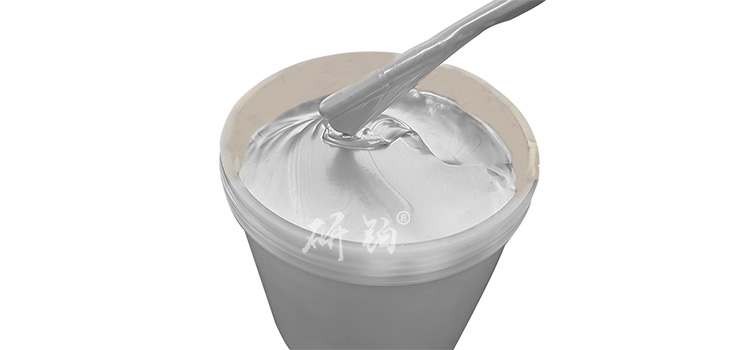

Hotline:0755-22277778
Tel:0755-22277778
Mobile:13826586185(Mr.Duan)
Fax:0755-22277776
E-mail:duanlian@xianjinyuan.cn
Conductive silver pasteReference formula 2: Conductive silver powder, E-44 epoxy resin, tetrahydrofuran, polyethylene glycol
Silver powder: 70% -80%
Epoxy resin: tetrahydrofuran mass ratio of 1: (2-3)
The mass ratio of epoxy resin to curing agent is 1.0: (0.2~0.3)
The mass ratio of epoxy resin to polyethylene glycol is 1.00: (0.05-0.10)
High boiling point solvents: butyl anhydride acetate, diethylene glycol butyl ether acetate, diethylene glycol ethyl ether acetate, isophorone
Curing principle: In the structure of epoxy resin, there are hydroxyl groups (>CH-OH), ether groups (- O -), and extremely active epoxy groups. The high polarity of hydroxyl and ether groups creates strong intermolecular forces between epoxy molecules and adjacent interfaces, while the epoxy groups react with free bonds on the surface of the medium (especially metal surfaces) to form chemical bonds. Therefore, epoxy resin has high adhesion and a wide range of applications, commercially known as the "universal glue". In addition, epoxy resin can also be used for coatings, casting, impregnation, and molds. However, before curing, epoxy resin has a thermoplastic linear structure, and a curing agent must be added during use. The curing agent reacts with the epoxy group of the epoxy resin to form a network structure of large molecules, which become insoluble and non melting thermosetting products. Epoxy resin has a relatively low molecular weight before curing, and can only form a large polymer shape through curing. The curing of epoxy resin requires the use of curing agents, and there are many types of curing agents, mainly polyamines and polyacids, whose molecules contain active hydrogen atoms. Among them, the most commonly used are liquid polyamines such as diethylenetriamine and triethylamine. When epoxy resin is cured at room temperature, it is often necessary to add some accelerators (such as polythiols) to achieve rapid curing. The selection of curing agent is related to the curing temperature of epoxy resin. Polyamines and polythioamines are generally used for curing at normal temperatures, while acid anhydrides and polyacids are generally used as curing agents for curing at higher temperatures. Different curing agents have different crosslinking reactions.
High temperature sintered conductive silver pasteProducts mainly made for quartz glass and coated glass substrates.
General characteristics
Has good printing performance, conductivity, and soldering performanceLead free conductive silver paste.
The sintered surface is smooth and glossy
Strong adhesion and welding resistance
Compliant with RoHS requirements
Performance Description
| colour |
silver gray |
| Solid Content |
70% (plus or minus 2% tolerance, calculated by weight) |
| Viscosity |
35~40Pa.s(25±1℃) |
| Fineness of slurry |
≤7μm |
| sheet resistivity |
<3mΩ/□ |
| hardness | ≥5H |
Instructions and guidance for use
Substrate: Quartz glass, coated glass.
Mixing: thoroughly mix before use.
Dilution: This product can be used after stirring evenly. It is recommended not to add diluent. If dilution is required, a specialized diluent should be used. It is recommended to dilute it by less than 3% of the weight of the silver paste, and then stir it evenly again after dilution. If the diluent added exceeds the above standards, the product quality and performance are not guaranteed.
Printing: This product is suitable for printing quartz glass and coated glass. The thickness and resistance of the cured film are affected by many related factors, such as the size, tension, scraping hardness, angle and speed of the screen, and the thickness of the photosensitive adhesive.
Recommended process
Applicable wire mesh: stainless steel or nylon wire mesh, 180-350 mesh
Drying conditions: ventilated baking, drying oven, 120-150 ℃, 10-20 minutes
Sintering conditions: 500~650 ℃, 10-20 minutes, atmospheric atmosphere conditions, ordinary sintering furnace (resistance furnace, muffle furnace), tunnel furnace, etc
Validity period: 12 months from the date of manufacture (please store at a temperature of 5-10 ℃)



Advanced Institute (Shenzhen) Technology Co., Ltd, © two thousand and twenty-onewww.avanzado.cn. All rights reservedGuangdong ICP No. 2021051947-1 © two thousand and twenty-onewww.xianjinyuan.cn. All rights reservedGuangdong ICP No. 2021051947-2